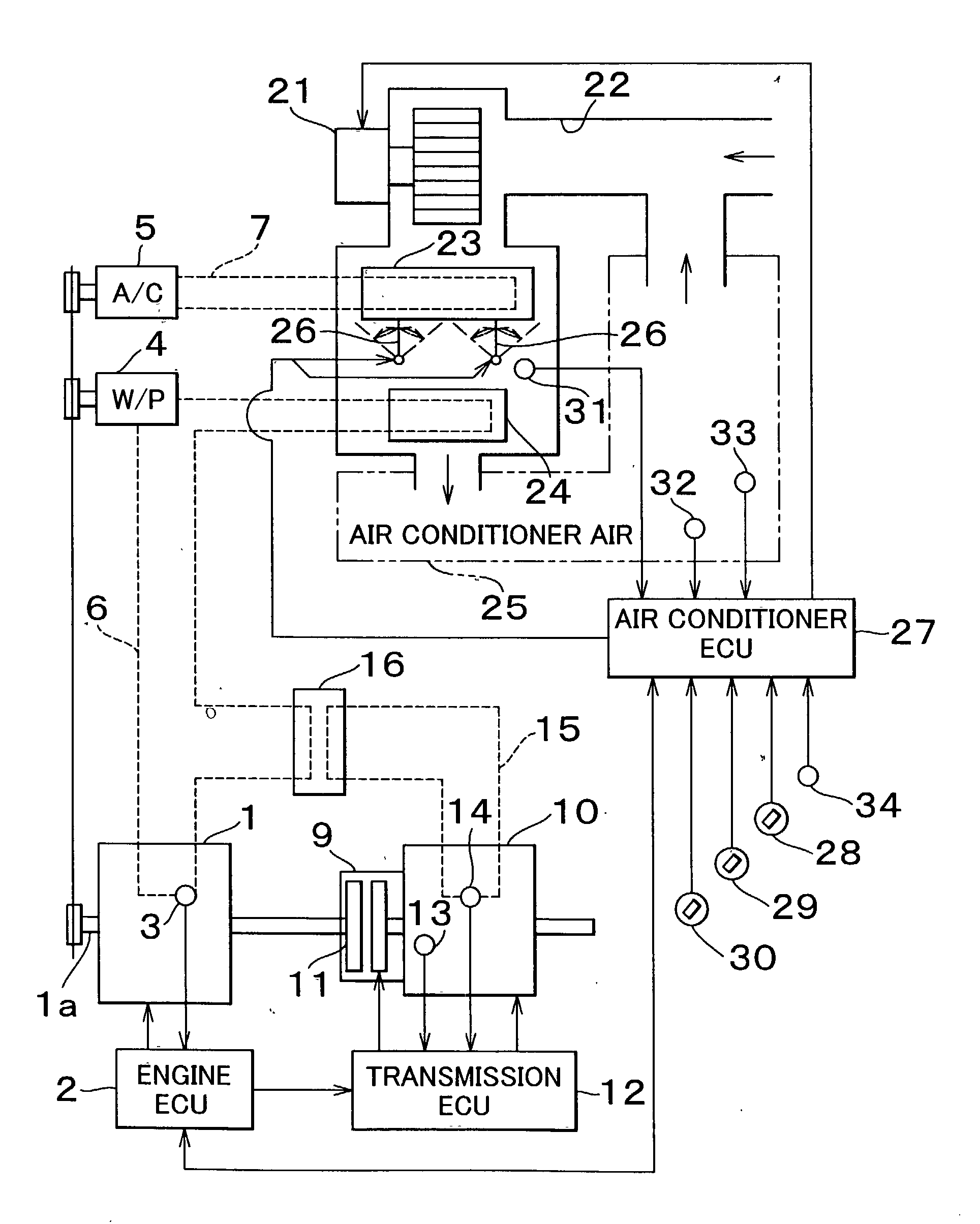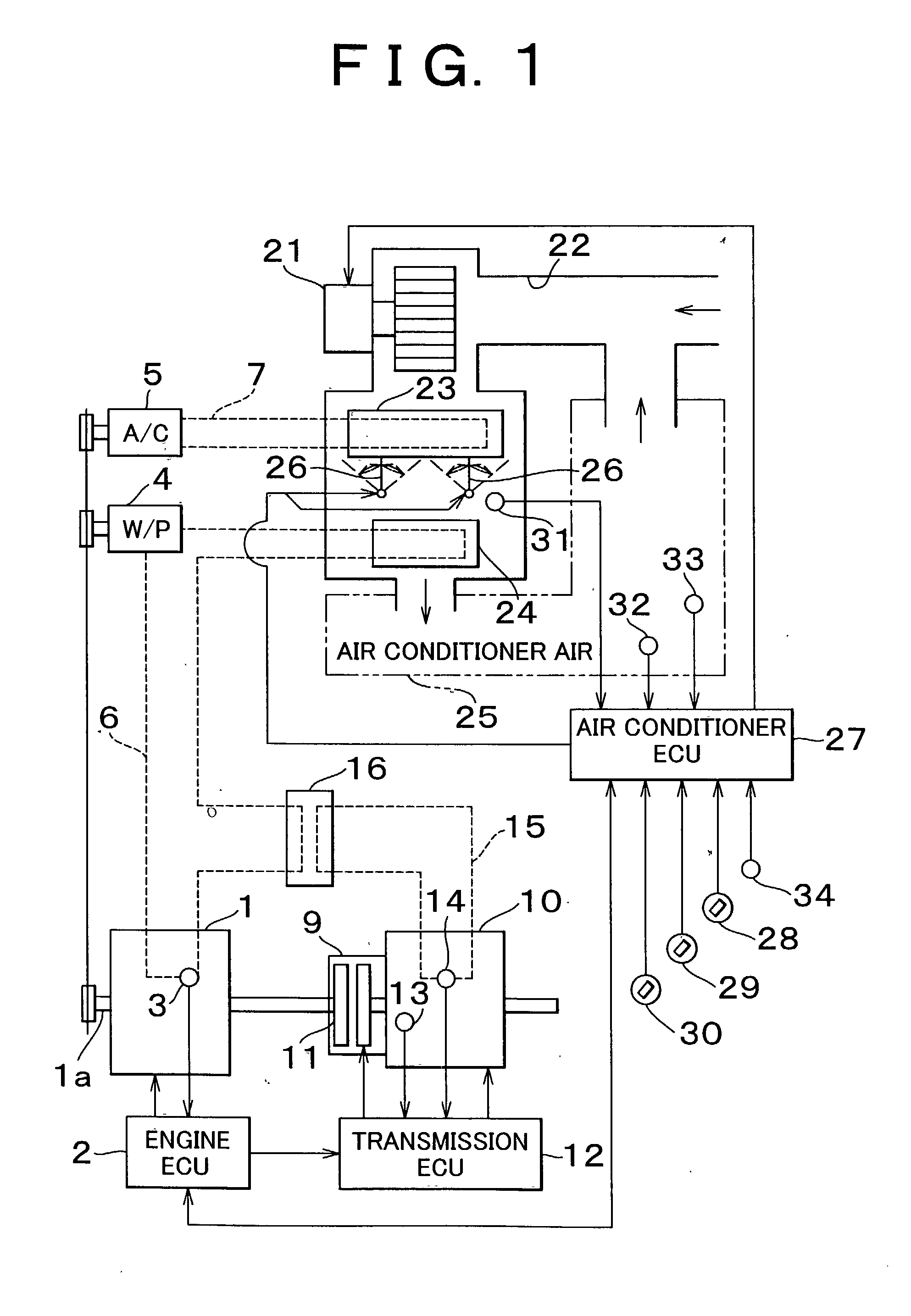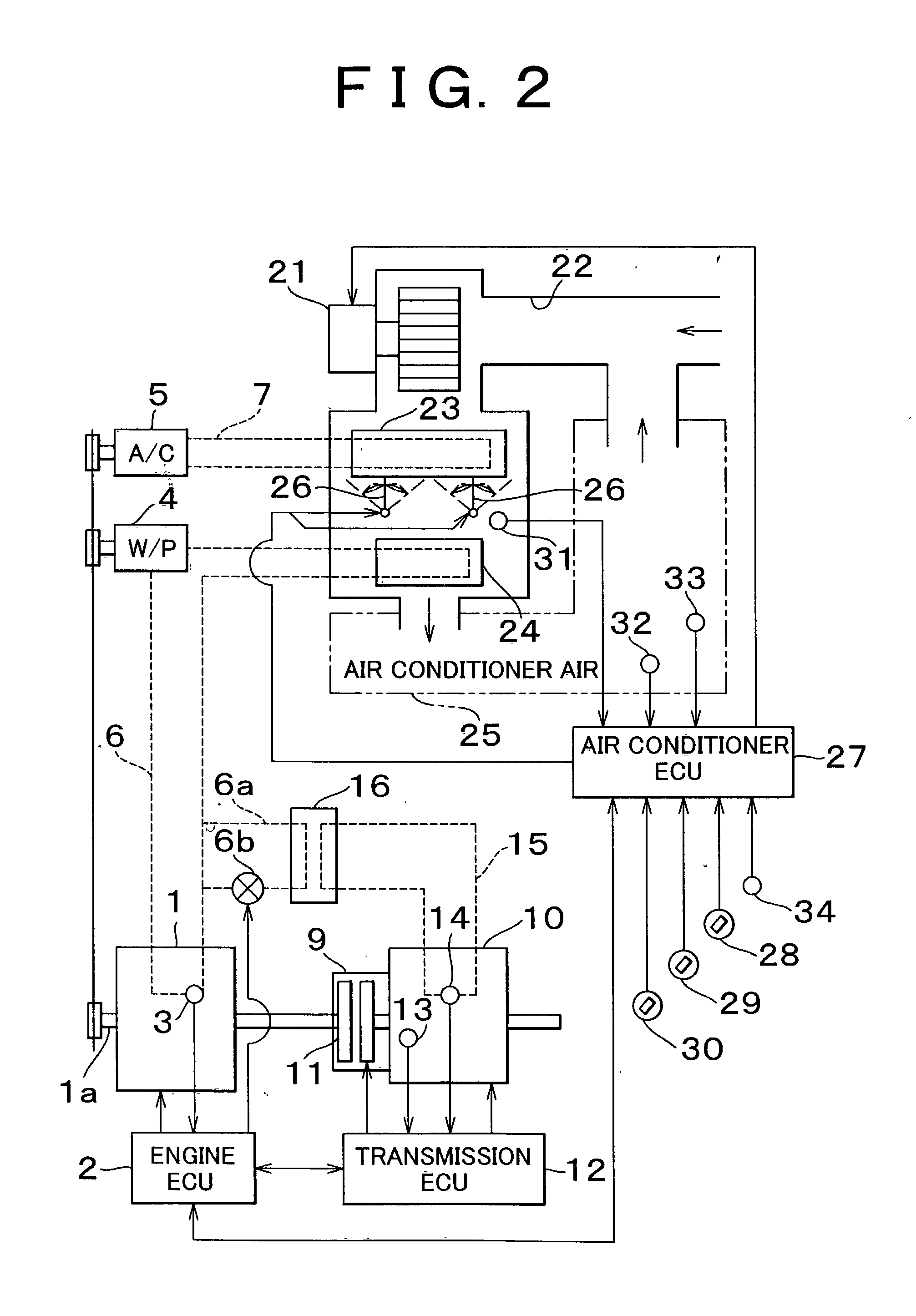Vehicular lockup clutch-equipped transmission control apparatus and control method thereof
a technology of transmission control apparatus and clutch, which is applied in the direction of fluid gearing, transportation and packaging, gearing, etc., can solve the problems of engine cooling water losing heat to hydraulic oil, responsiveness deterioration, adversely affecting drivability,
- Summary
- Abstract
- Description
- Claims
- Application Information
AI Technical Summary
Benefits of technology
Problems solved by technology
Method used
Image
Examples
first embodiment
[0029] FIRST EMBODIMENT
[0030] A first embodiment in which the invention is applied to a motor vehicle will be described with reference to FIGS. 1 to 4.
[0031] An engine 1 shown in FIG. 1 is operated and controlled via an engine-controlling electronic control unit (engine ECU) 2 installed in the motor vehicle. The engine ECU 2 receives input of a detection signal from a water temperature sensor 3 that detects the temperature of cooling water of the engine 1. During operation of the engine 1, rotation of an output shaft 1a of the engine 1 can be transferred to a water pump 4 and an air conditioner compressor 5, so that the water pump 4 and the compressor 5 can be operated. When the water pump 4 operates, cooling water of the engine 1 circulates through a cooling water passage 6. When the compressor 5 operates, an air conditioner coolant is cooled while circulating through a coolant passage 7.
[0032] The output shaft 1a of the engine 1 is connected to a transmission 10 via a torque conve...
second embodiment
[0072] SECOND EMBODIMENT
[0073] A second embodiment of the invention will next be described with reference to FIGS. 5 and 6.
[0074] In this embodiment, the determination as to whether the heating capability requested of the air conditioner apparatus is higher than or equal to a predetermined level is made based on the needed outlet temperature, which is a parameter related to the temperature inside the cabin 25, if the automatic control of the air conditioner apparatus is selected, and based on the degree of opening of the air-mixing damper 26 and the blower air volume, which are parameters related to the temperature inside the cabin 25, if the manual control of the air conditioner apparatus is selected.
[0075] FIGS. 5 and 6 show a flowchart illustrating a lockup region setting routine in accordance with this embodiment. The lockup region setting routine of the second embodiment differs from that of the first embodiment in a process (S202 to S207) corresponding to step S102 in the lock...
third embodiment
[0088] Third Embodiment
[0089] A procedure of controlling the temperature of working oil of the torque converter 9, the transmission 10, etc. will be described with reference to the flowchart of FIG. 7 illustrating an oil temperature control routine. This oil temperature control routine is executed, for example, by a time interrupt at every predetermined time, via the engine ECU 2.
[0090] In the oil temperature control routine, it is first determined whether the external air temperature, which is a parameter related to the temperature inside the cabin 25, is higher than or equal to a predetermined value a (e.g., 5.degree. C.) (S301). In this routine, a heating capability requested of the air conditioner apparatus is estimated based on the external air temperature, and it is determined whether the requested heating capability is higher than or equal to a predetermined level. This manner of determination is possible because low external air temperatures means that increased high heating...
PUM
 Login to View More
Login to View More Abstract
Description
Claims
Application Information
 Login to View More
Login to View More - R&D
- Intellectual Property
- Life Sciences
- Materials
- Tech Scout
- Unparalleled Data Quality
- Higher Quality Content
- 60% Fewer Hallucinations
Browse by: Latest US Patents, China's latest patents, Technical Efficacy Thesaurus, Application Domain, Technology Topic, Popular Technical Reports.
© 2025 PatSnap. All rights reserved.Legal|Privacy policy|Modern Slavery Act Transparency Statement|Sitemap|About US| Contact US: help@patsnap.com



